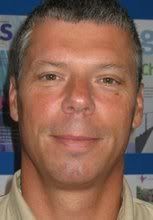 —By Katy Devlin, commercial glass and metals editor, Glass Magazine
—By Katy Devlin, commercial glass and metals editor, Glass MagazineDuring a 10-day stretch this month, I took seven flights, maneuvered throughout five airports, dealt with one lost bag*, faced one cancelled flight and spent one night in the Atlanta airport (I recommend Terminal C. The lack of the armrests on the seat rows makes for a surprisingly comfortable make-shift bed). I also traveled on completely full flights and paid noticeably more for my tickets.
During my ample hours of airport meditation time, I contemplated the cause of my uncharacteristic travel woes. I shifted away from the ever-so-tempting urge to blame my annoying waits and detours on the airlines. Rather, I placed blame much more accurately on rising fuel prices (plus a little bit of unpredictable summer weather and a pinch of bad luck).
The airlines are struggling, and it seems the days of empty flights, cheap tickets and free perks have ended.
Fuel costs directly influence fares. Currently, about 40 percent of an air fare goes to paying for fuel, up from 15 percent in 2000, according to a June 13 Reuters article. Domestic tickets cost 6.8 percent more per mile compared to last year, according to a June 20 MarketWatch article. United, American and Delta have increased domestic fares by up to $60, and even discount carrier AirTran upped fares by $30, according to a June 17 CNN.com article.
To cut costs, many of the major airlines are reducing flights. Delta, for one, is cutting capacity by 13 percent, according to a June 19 New York Times article. Fewer flights mean less travel flexibility—likely the reason why I was forced to take two 6 a.m. flights in this most recent travel spree, despite a personal promise never to fly before brunch-time. Limited flights also mean that missing a connection could become an even-more annoying adventure, as the time until the next available flight is certainly increased, and perhaps overnight. And, fewer flights mean crowded planes creating less space for carry-ons (and beware about checking a bag, because you’ll soon have to pay for that as well), longer boarding and de-boarding waits, and no empty seats, which sadly means no more lay-down midflight naps.
So, what’s a traveler to do in these tough travel times? I recommend booking early, packing light and buying a neck pillow. Oh, and come with ample patience, and avoid blaming the airlines and their personnel** for your travel pains unless it really is their fault (and even then, try to be nice about it).
*Did you know that you can buy items from unclaimed baggage? Check out the Unclaimed Baggage Center in Scottsboro, Ala. They buy truckloads of unclaimed baggage and flip it—thankfully my baggage is not included in their unique wares, as it was returned to me after a brief journey to Puerto Rico.
**I was on a plane in taxi at Washington Reagan three weeks ago right as a thunderstorm started to roll through. As sideline rain obstructed our view of the constant lightening flashes all around, and strong winds shook the plane as it sat on the ground, a fellow passenger in front of me became livid and berated the flight attendant about missing his connection on the other end. Really?



